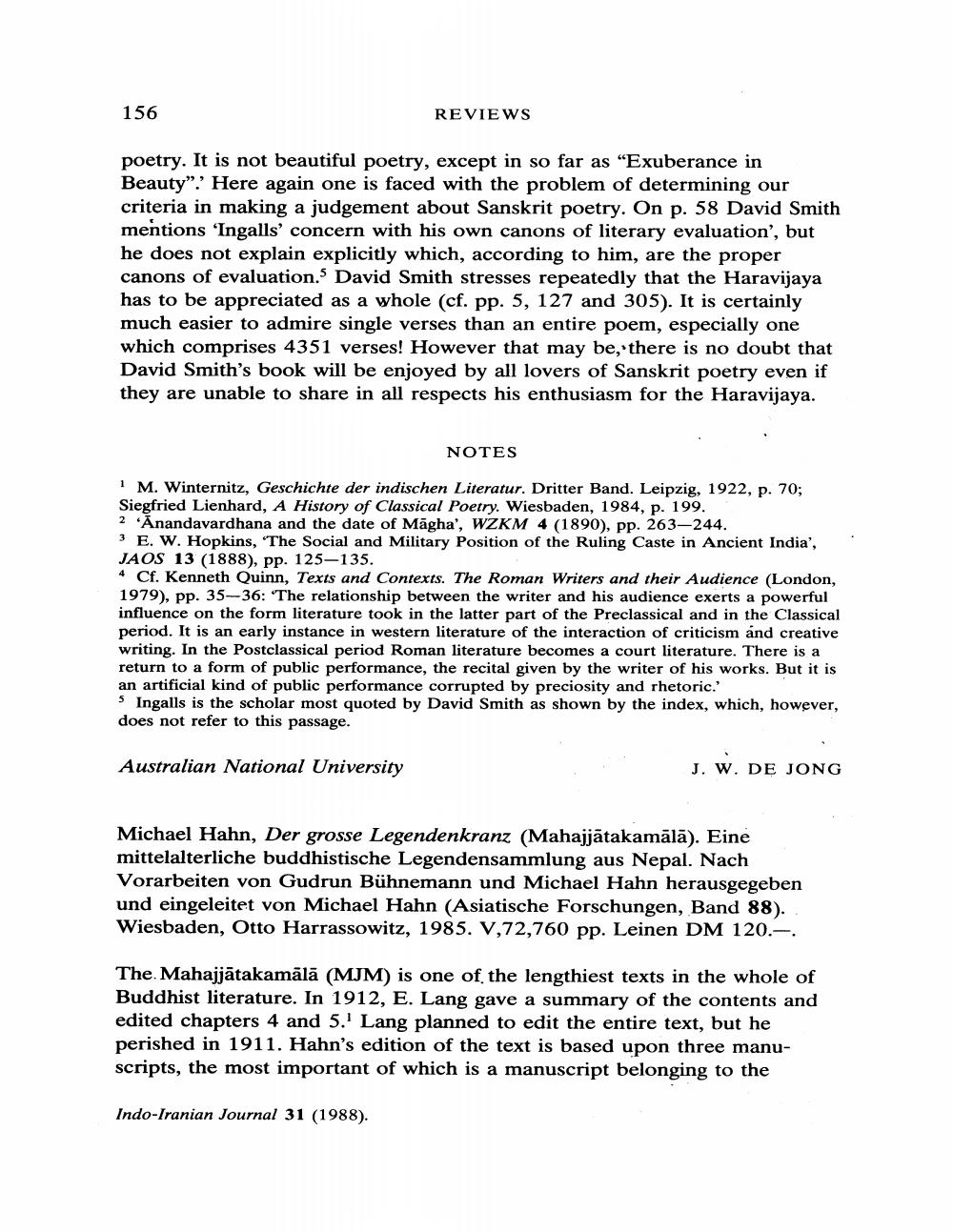________________
156
REVIEWS
poetry. It is not beautiful poetry, except in so far as “Exuberance in Beauty”. Here again one is faced with the problem of determining our criteria in making a judgement about Sanskrit poetry. On p. 58 David Smith mentions 'Ingalls' concern with his own canons of literary evaluation', but he does not explain explicitly which, according to him, are the proper canons of evaluation. David Smith stresses repeatedly that the Haravijaya has to be appreciated as a whole (cf. pp. 5, 127 and 305). It is certainly much easier to admire single verses than an entire poem, especially one which comprises 4351 verses! However that may be, there is no doubt that David Smith's book will be enjoyed by all lovers of Sanskrit poetry even if they are unable to share in all respects his enthusiasm for the Haravijaya.
NOTES
1 M. Winternitz, Geschichte der indischen Literatur. Dritter Band. Leipzig, 1922, p. 70; Siegfried Lienhard, A History of Classical Poetry. Wiesbaden, 1984, p. 199. 2 Anandavardhana and the date of Māgha', WZKM 4 (1890), pp. 263-244. 3 E. W. Hopkins, 'The Social and Military Position of the Ruling Caste in Ancient India', JAOS 13 (1888), pp. 125-135. 4 Cf. Kenneth Quinn, Texts and Contexts. The Roman Writers and their Audience (London, 1979), pp. 35-36: "The relationship between the writer and his audience exerts a powerful influence on the form literature took in the latter part of the Preclassical and in the Classical period. It is an early instance in western literature of the interaction of criticism and creative writing. In the Postclassical period Roman literature becomes a court literature. There is a return to a form of public performance, the recital given by the writer of his works. But it is an artificial kind of public performance corrupted by preciosity and rhetoric. 5 Ingalls is the scholar most quoted by David Smith as shown by the index, which, however, does not refer to this passage.
Australian National University
J. W. DE JONG
Michael Hahn, Der grosse Legendenkranz (Mahajjātakamālā). Eine mittelalterliche buddhistische Legendensammlung aus Nepal. Nach Vorarbeiten von Gudrun Bühnemann und Michael Hahn herausgegeben und eingeleitet von Michael Hahn (Asiatische Forschungen, Band 88). Wiesbaden, Otto Harrassowitz, 1985. V,72,760 pp. Leinen DM 120.-.
The. Mahajjātakamālā (MJM) is one of the lengthiest texts in the whole of Buddhist literature. In 1912, E. Lang gave a summary of the contents and edited chapters 4 and 5.' Lang planned to edit the entire text, but he perished in 1911. Hahn's edition of the text is based upon three manuscripts, the most important of which is a manuscript belonging to the
Indo-Iranian Journal 31 (1988).




